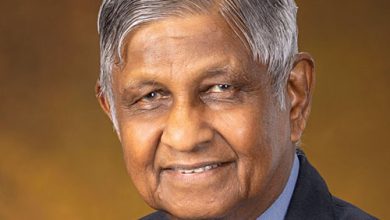Compiled by Isanka Perera
HUMAN CAPITAL EVOLUTION
Prof. (Dr.) Ajantha Dharmasiri elucidates the evolution of HR management
Q: How do you view the evolution of the human resources (HR) function?
A: The concept of personnel management was created as a result of factories being set up in response to industrialisation since it was necessary to administer industrial welfare.
Several decades later, it took a more humane approach and workers were treated as human beings with dignity rather than slaves. They were recognised as resources to organisations irrespective of where they stood in organisational hierarchies.
In addition to Human Resource Management (HRM), Human Capital Management (HCM) is the concept of managing and unleashing the full potential of employees in a manner that would improve the productivity of organisations.
Adding another dimension to this endeavour is Human Potential Management (HPM), which focusses on identifying and advancing employees’ potential by developing their talents.
As a result of the pandemic, organisations have become more HR-oriented because decision makers realised that lives are more important than livelihoods. Businesses that were typically driven by numbers were compelled to become more empathetic and humane.
This is where HR stands today; and it will continue to evolve with time. It has also taken a turn towards eco-friendliness with ‘green HRM.’ And now, HR is moving towards ‘human aspirations management’ and opting for a focus on spirituality in the workplace.
Q: The advent of technology is a given in the management of human resources... so do technology driven HR practices vary drastically from traditional approaches?
A: Technology is revolutionising the way we work. HR professionals have been relieved of a substantial quantum of routine work, thanks to the integration of technology. It has reduced paperwork, enabled the simultaneous completion of several activities and improved overall performance. Meanwhile, AI has transformed human resources practices.
Although artificial intelligence has the potential to fully automate some functions that are currently carried out manually, jobs requiring emotional intelligence (EI), social skills, sensitivity and bargaining prowess can’t be fully replaced by AI. HR is one such sphere.
It’s understood that technology can’t play the role of an HR professional on its own. However, with ‘AI-EI harmony’ (because emotional intelligence is an essential component), we will be able to use it to become better, faster and smarter.
As a result, there will be an increase in the efficacy of what we do while balancing the human and emotional sides of business interactions.
Q: In what ways do millennials and Gen Z differ from other generations? And what strategies should be employed to recruit, retain and manage these demographics?
A: At present, we see a multigenerational workforce comprising Gen X, millennials (Gen Y) and centennials (Gen Z). There are differences because of generational perspectives.
The greatest difference is that Gen Z is extremely tech savvy. This shouldn’t come as a surprise as centennials are digital natives who were born in the era of smartphones and are adept at using multiple devices. Another difference is that the younger generation is very target-oriented, resourceful and self-reliant.
Gen Z individuals have grown up in complex and uncertain times, and they have adapted by taking the initiative, thriving in volatile environments and questioning the status quo to find out if there is a better way to get a job done.
We need to promote cross mentoring. Members of a senior generation can be ‘respected mentors’ for the young ones and those among the younger generations can be ‘reverse mentors’ for the seniors.
The key word is ‘empathy.’ Putting yourself in another’s shoes and learning where they’re coming from can help one to understand the similarities, as well as differences, between generations. Intergenerational gaps and similarities aside, we’re all human beings – and that humanity should remain, irrespective of whichever generation you represent.
Q: It is widely believed that younger workers expect and demand more flexibility in their jobs than previous generations. What role does the work-life balance play in this equation, in your assessment?
A: The work-life balance is a hackneyed phrase that has become obsolete with the rise of globalisation, mobility and 24/7 connectivity.
My argument is very simple: for something to be ‘balanced,’ you should be able to put it on a weighing scale. Life is a large sphere; and in it, you have work, family, society and many other aspects. Therefore, you can’t put work on one side and life on the other. There is life in work and work in life.
Enabling harmony between work, family and society is the solution to this dilemma. Integrating yourself in the workplace as a whole person with boundaries helps you out equal value on all aspects of life.
Such an approach will increase your productivity by making you more efficient and effective as an employee while ensuring that one fulfils one’s duties to the family, in addition to taking care of hobbies, spirituality, relationships, passions and interests.






